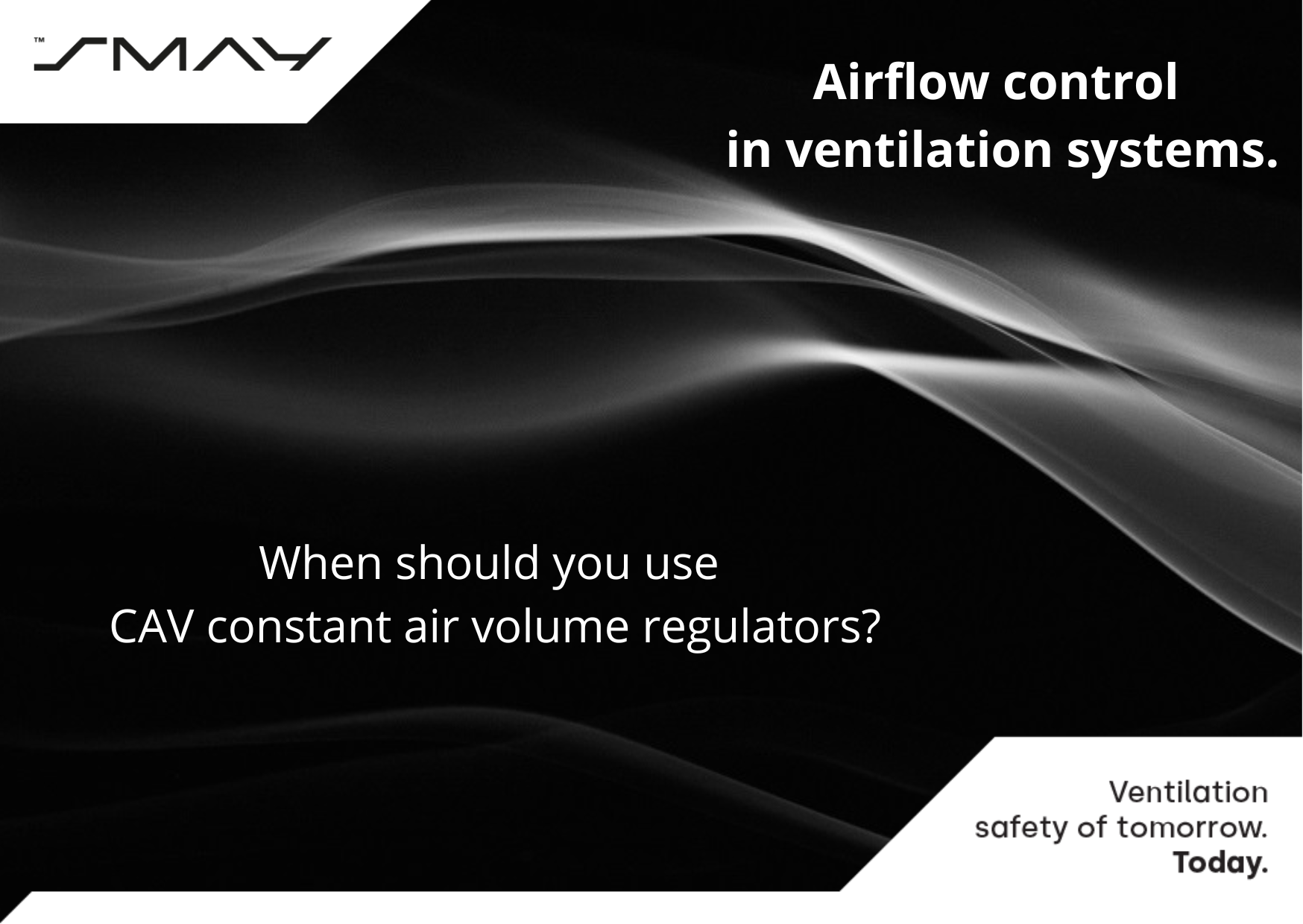Airflow control in ventilation systems. When should you use CAV constant air volume regulators?

How do I adjust airflow in a ventilation system properly? When should you use CAV regulators? Quite a few mechanical system designers think about the most optimal solution. Airflow control may be approached in several ways and we list those most effective below.
Orifices and control dampers – manual control
One of the simplest ways of controlling airflow in ventilation systems is to use orifices or control dampers. However, this method requires a lot of effort as early as during the commissioning of a ventilation system and then manual system adjustment. In the usage phase, every change in control requires manual adjustment of the devices and measurements of efficiency, all of which turn out to be time-consuming and inconvenient during subsequent operation. In addition, it is associated with an additional cost of labour in the building usage phase. An alternative, much more convenient solution is to use VAV variable air volume regulators or CAV constant air volume regulators.
When do CAV regulators turn out to be better?
In ventilation systems where there is no need to change the airflow over time, CAV constant air volume regulators will perform well, for example, SMAY’s RCP-P rectangular regulators and RCP-R round regulators. Their greatest advantage is that they do not have to be supplied with electrical power.
Precise design instead of electricity
Airflow control at the determined level is achieved by means of the precise design of the regulator mechanism and the desired set point is selected in a simple way – by the appropriate setting of the indicator on the housing. The indicator may be set freely within the range from 2 m/s to 10 m/s. A previously selected set point may be changed manually during system operation. The precise design of regulators makes it possible to maintain the required airflow regardless of the pressure inside the system. The regulator mechanism is intended to close the baffle partially when the pressure increases and to open it when the pressure difference is low.
How should CAV regulators be used in practice?
In the case of a simple ventilation system, a separate RCP regulator might be installed at each air supply line for every room. Such a solution makes it possible to control the airflow supplied to each space at the determined level in a simple manner. Constant air volume control makes it possible to enable changes during system operation in an easy way. This function may be used when the purpose of a specific room changes or when the assumed number of users changes.
Specificity of the regulator operation
As an example, to limit the airflow supplied to one of the rooms, it is only necessary to change the set point of the single regulator supporting this room. Regulators supporting other rooms will detect the change in pressure in the system and automatically partially close the baffles to keep the amount of air supplied to other rooms at the same level. If it is necessary to change the set points frequently, regulators may be equipped with electrical actuators as an option.
Advantages of CAV regulators
• Energy efficient
The devices do not have to be supplied with electrical power and therefore their operation saves energy.
• Effective control
SMAY regulators can adjust airflow in the system effectively when the pressure difference on both sides of the regulator is not higher than 500 Pa.
• Accuracy
For most set points, adjustment accuracy error is no greater than 10% within the pressure range shown.
• Low probability of error
Keeping the velocity at the level of 2–3 m/s is the only setting where the error may be higher but still no greater than 20%. This solution is recommended for situations where the airflow is constant over a long period of time and frequent changes in the airflow being supplied to the rooms are not required.
If you want to learn more about VAV and CAV regulators, visit our blog.
Author: Izabela Tekielak-Skalka



